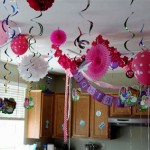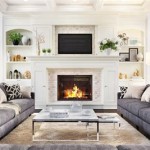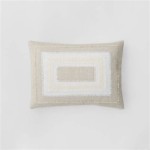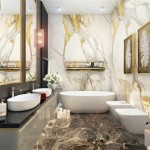DIY Room Decor on a Budget: Transforming Your Space Economically
Creating a personalized and aesthetically pleasing living space does not necessitate substantial financial investment. Implementing do-it-yourself (DIY) room decor strategies can significantly enhance the ambiance of a room while adhering to a strict budget. This approach not only allows for creative expression but also promotes sustainable practices by repurposing existing materials and reducing unnecessary consumption. The following article explores a range of DIY decor ideas that can be implemented with minimal expense, emphasizing resourcefulness and ingenuity.
Repurposing Existing Materials for Unique Decor
One of the most economical approaches to room decor involves repurposing items that are already available. This strategy minimizes expenditures while simultaneously promoting environmental consciousness. Common household items can be transformed into functional and aesthetically pleasing decorative elements with a little imagination and effort.
Glass jars, for instance, can be repurposed in a multitude of ways. Cleaned and meticulously decorated, these jars can serve as vases, organizing receptacles for small items, or even as candle holders. Painting the jars with acrylic paint, wrapping them with twine, or embellishing them with decoupage techniques are all viable options. Alternatively, clear glass jars can be filled with decorative items such as seashells, colored sand, or fairy lights to create visually appealing centerpieces.
Old clothing items, particularly those made of textured fabrics or featuring interesting patterns, can be transformed into decorative pillows or wall hangings. Fabric scraps can be sewn together to create patchwork designs, or individual pieces of fabric can be stretched over canvas frames to create abstract art. Denim, in particular, offers a versatile material for creating durable and stylish storage solutions or decorative accents.
Wooden pallets, often discarded by businesses, represent another readily available and inexpensive resource. These pallets can be sanded down, painted, and repurposed as headboards, coffee tables, or even vertical gardens. Disassembling the pallets and using the individual planks allows for even greater flexibility in creating custom furniture pieces or wall paneling.
Magazines and newspapers, often relegated to the recycling bin, can be used to create collages, decoupage projects, or even rolled into tight cylinders to create decorative bowls or picture frames. The possibilities are limited only by one's imagination and willingness to experiment.
Creating Wall Art on a Shoestring
Wall decor significantly contributes to the overall atmosphere of a room. Instead of purchasing expensive artwork, individuals can create their own unique pieces using affordable materials and techniques. This approach allows for personalized expression and ensures that the artwork complements the existing decor scheme.
Abstract art can be easily created using acrylic paints and canvas boards or even thick paper. Simple techniques such as pouring, splattering, or using textured brushes can produce visually striking results. Experimentation with color palettes and layering techniques can further enhance the artistic outcome. Online tutorials and resources offer step-by-step guidance for those less experienced with painting.
Photography provides another accessible avenue for creating personalized wall art. Printing high-resolution photographs of landscapes, portraits, or abstract compositions can be done affordably at most printing services. Framing these prints with inexpensive frames from thrift stores or craft stores completes the project. Alternatively, canvas prints can be ordered online at competitive prices.
Wall decals offer a removable and easily customizable option for adding visual interest to walls. These decals can be purchased pre-made or created using vinyl cutting machines. Creating custom designs allows for personalization and ensures that the decals complement the room's existing decor. Stencils can also be used to paint intricate designs directly onto the walls, providing a more permanent but equally customizable option.
Creating a gallery wall by arranging a collection of framed prints, photographs, and other decorative items offers a visually appealing and budget-friendly way to personalize a space. Mixing and matching different frame styles and sizes adds visual interest, while adhering to a consistent color scheme or theme creates a cohesive look. Thrift stores and flea markets are excellent sources for finding inexpensive frames and decorative items to incorporate into a gallery wall.
Utilizing Lighting to Enhance Ambiance
Lighting plays a crucial role in setting the mood and enhancing the visual appeal of a room. Strategic use of lighting can transform a dull space into a warm and inviting environment. Implementing DIY lighting solutions provides an affordable way to achieve desired ambiance without breaking the bank.
Fairy lights, also known as string lights, offer a versatile and inexpensive way to add a touch of whimsy and warmth to any room. These lights can be draped around furniture, hung along walls, or placed inside glass jars to create ambient lighting. Battery-operated fairy lights offer flexibility in placement, eliminating the need for nearby electrical outlets.
Edison bulbs, with their distinctive vintage aesthetic, provide a stylish and affordable lighting option. These bulbs can be used in pendant lights, table lamps, or even hung bare from the ceiling to create a minimalist yet impactful lighting statement. Investing in a dimmer switch allows for adjusting the brightness of the bulbs to create different moods.
DIY lampshades offer a creative way to personalize existing lamps and add a unique touch to the room's decor. Plain lampshades can be embellished with fabric scraps, ribbon, or even painted with custom designs. Wireframe lampshades can be covered with fabric or paper to create a custom look. Online tutorials offer step-by-step guidance for creating various types of DIY lampshades.
Candles, both scented and unscented, provide a warm and inviting glow. Grouping candles of different sizes and shapes together creates a visually appealing centerpiece. Repurposing glass jars or tin cans as candle holders adds a rustic touch. Ensuring that candles are placed on a heat-resistant surface and away from flammable materials is crucial for safety.
Creating a focal point with strategically placed lighting can significantly enhance the ambiance of a room. Spotlighting artwork, highlighting architectural features, or illuminating indoor plants can draw attention to specific areas and create visual interest.
Implementing Textile-Based Decor
Textiles, including fabrics, yarns, and threads, offer a versatile medium for adding texture, color, and pattern to a room. DIY textile-based decor projects provide a cost-effective way to personalize a space and create a cozy and inviting atmosphere.
Macrame, a knotting technique used to create decorative wall hangings, plant hangers, and other items, offers a relatively simple and affordable way to add a bohemian touch to a room. Cotton cord, readily available at craft stores, is the primary material used in macrame projects. Online tutorials and patterns provide guidance for creating various macrame designs.
Crocheting or knitting blankets, throws, or pillow covers provides a cozy and personalized touch to a room. Utilizing inexpensive yarn and simple stitch patterns can result in beautiful and functional decorative items. Learning basic crochet or knitting techniques opens up a wide range of possibilities for creating custom textile-based decor.
Embroidered wall art offers a unique and personalized way to add texture and visual interest to walls. Using embroidery floss and a needle, intricate designs can be stitched onto fabric and framed. Embroidery kits provide all the necessary materials and instructions for beginners. Alternatively, free embroidery patterns can be found online.
Creating fabric banners or garlands offers a festive and customizable way to add color and pattern to a room. Fabric scraps can be cut into different shapes and strung together using twine or ribbon. Banners can be hung along walls, across windows, or over doorways to create a celebratory atmosphere.
Tie-dyeing fabric offers a fun and creative way to transform plain clothing items or fabric scraps into unique decorative pieces. Simple tie-dye techniques can create vibrant and eye-catching patterns. Old t-shirts, pillowcases, or curtains can be given a new lease on life with tie-dye designs.
Adding Greenery to Enhance the Living Space
Incorporating plants into a room can significantly enhance its aesthetic appeal and create a more calming and inviting environment. Plants not only add visual interest but also improve air quality and promote a sense of well-being. Implementing DIY planting solutions provides an affordable way to bring greenery into the living space.
Propagating plants from existing cuttings offers a cost-free way to expand one's indoor plant collection. Many common houseplants, such as pothos, snake plants, and spider plants, are easily propagated by placing cuttings in water until roots develop. Once the roots are established, the cuttings can be planted in soil.
Repurposing containers as planters provides a creative and economical alternative to purchasing expensive pots. Tin cans, glass jars, and even old teacups can be transformed into stylish planters. Ensuring that the containers have drainage holes is crucial for preventing root rot.
Creating a vertical garden offers a space-saving and visually appealing way to display plants. Pallets, repurposed shelving units, or even hanging shoe organizers can be used to create vertical gardens. Selecting plants that thrive in similar conditions and require minimal maintenance is essential for successful vertical gardening.
Air plants, which do not require soil, offer a low-maintenance and versatile option for adding greenery to a room. These plants can be displayed in glass terrariums, hung from macrame hangers, or simply placed on shelves or tables. Regular misting is necessary to keep air plants hydrated.
Utilizing natural elements, such as branches, stones, and pinecones, to create decorative displays adds a rustic and organic touch to a room. These elements can be collected from the outdoors and arranged in vases, bowls, or trays. Combining natural elements with plants creates a harmonious and visually appealing display.

Diy Room Decor Organization Easy Inexpensive Ideas

15 Diy Ideas To Refresh Your Living Room Crafts Decor On A Budget Apartment

Easy Diy Dorm Room Decor All Style Life

Diy Bedroom Decor Ideas On Any Budget The Decorator

50 Diy Home Decor Projects That May Fit Any Budget

Classy Diy Bedroom Wall Ideas

36 Diy Home Decor Projects Easy Craft Ideas For Decorating

50 Fun And Easy Diy Room Decor Ideas That Won T Break The Bank

Diy Room Decor And Design Ideas For Home

50 Fun And Easy Diy Room Decor Ideas That Won T Break The Bank
Related Posts







